Suicide and Serious Mental Illness
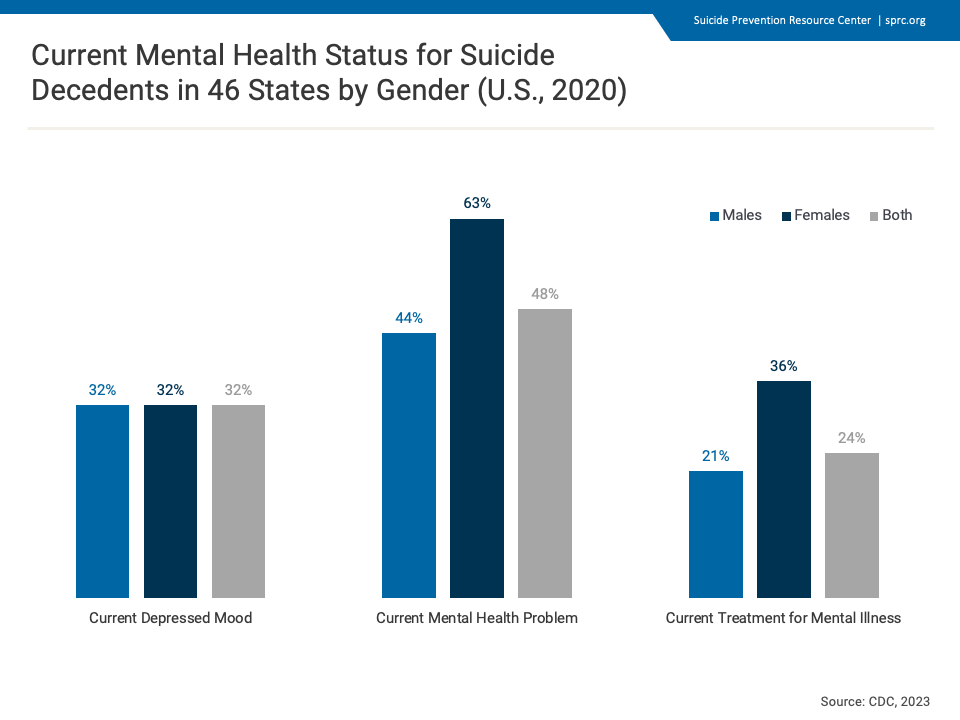
This bar graph presents the mental health status of suicide decedents at time of death in 46 U.S. states by gender. An equal percentage of male and female decedents in 2020 were experiencing current depressed mood. Compared to male decedents, a greater percentage of female decedents was identified as having a current mental health problem. Higher current treatment for mental illness was reported among females than among males.1
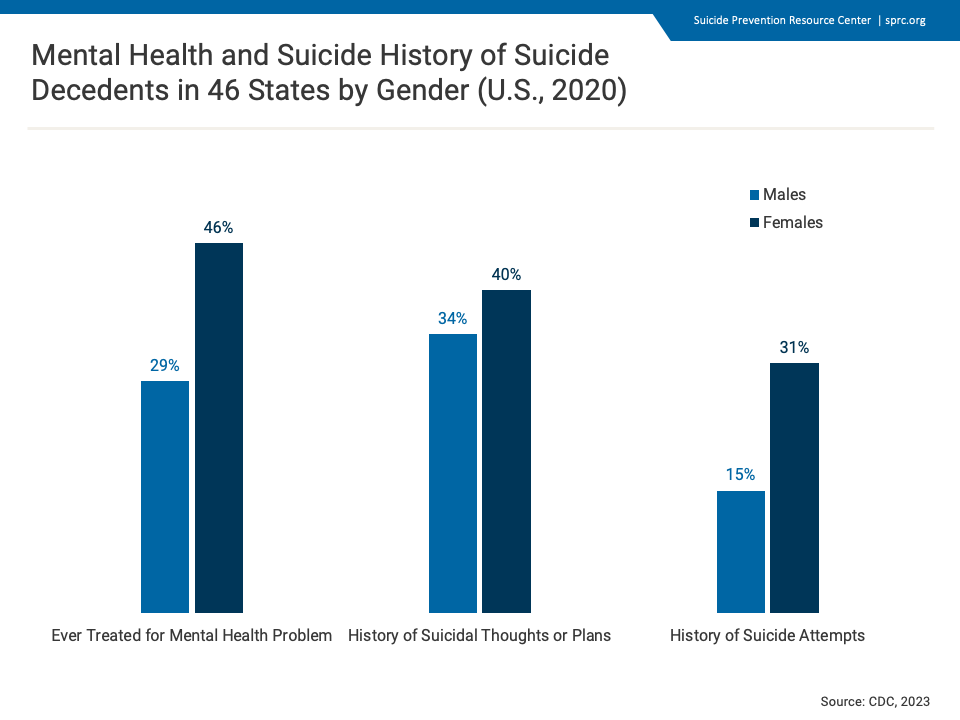
This bar graph presents the mental health and suicide history of suicide decedents in 46 U.S. states by gender in 2020. Compared to male decedents, a greater percentage of female decedents had been treated for a mental health problem in the past. A higher percentage of female decedents also had a history of suicidal thoughts or suicide attempts.1
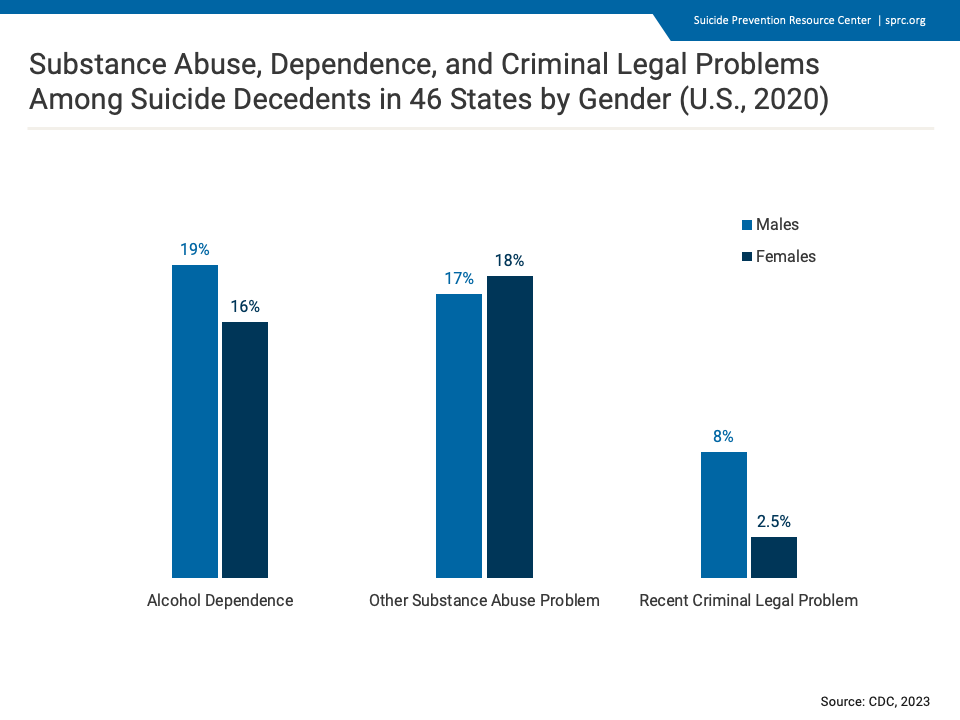
This bar graph presents substance abuse, dependence, and criminal legal problems among suicide decedents in 46 U.S. states by gender in 2020. Compared to female decedents, a greater percentage of male decedents was identified as having current alcohol dependence. The percentage of male decedents identified as having a current other substance abuse problem was slightly lower compared to female decedents. Other criminal legal problems percentages were higher in males than in females.1
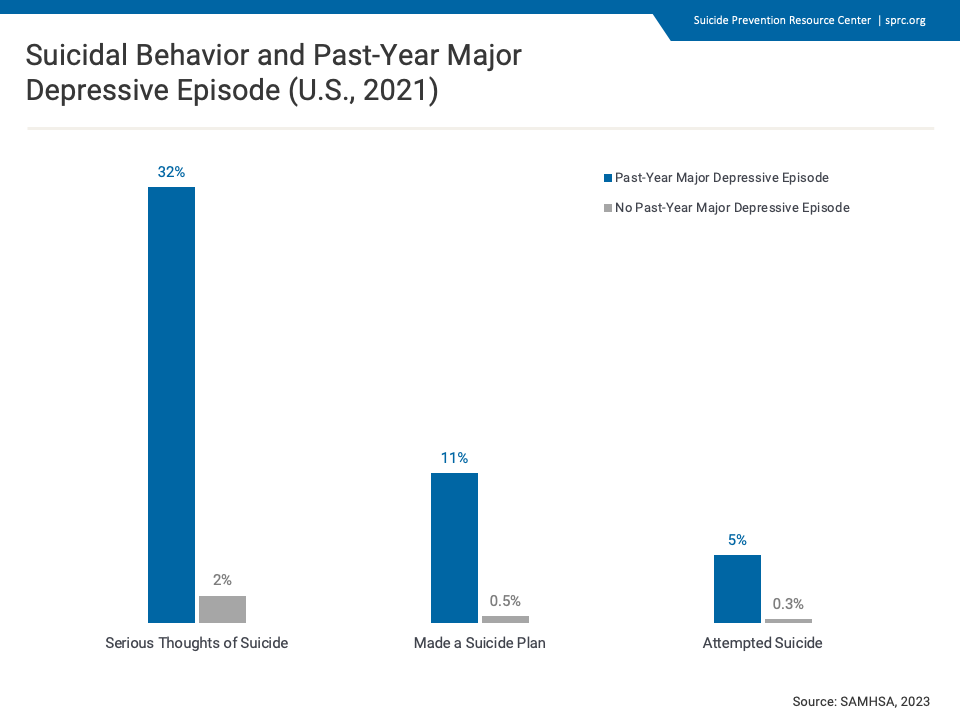
In 2021, past-year suicide-related thoughts and behaviors were much more common among those with a past-year major depressive episode. Making a suicide plan was much more common among those with a past-year major depressive episode. Suicide attempt rates were higher among those who had a major depressive episode (5%) than among those with no major depressive episode (0.3%).2
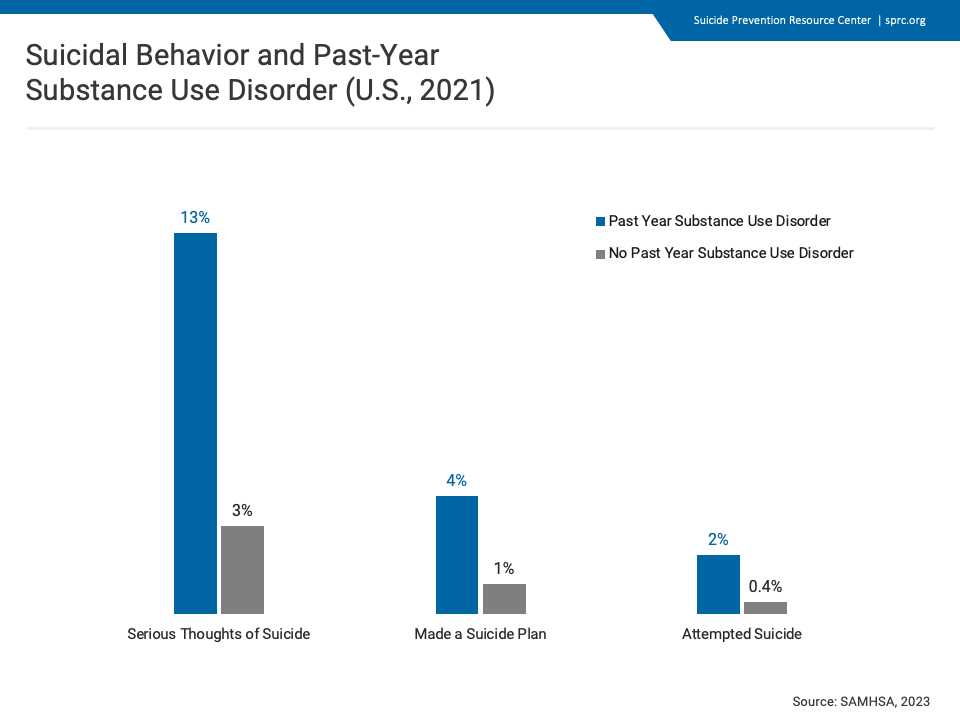
In 2021, individuals with a past-year substance use disorder were over four times more likely to have had serious thoughts of suicide in the past year than those who did not have a past-year substance use disorder. Those with a past-year substance use disorder were almost four times more likely to make a suicide plan and almost four times more likely to attempt suicide than those who did not have a past-year substance use disorder.2
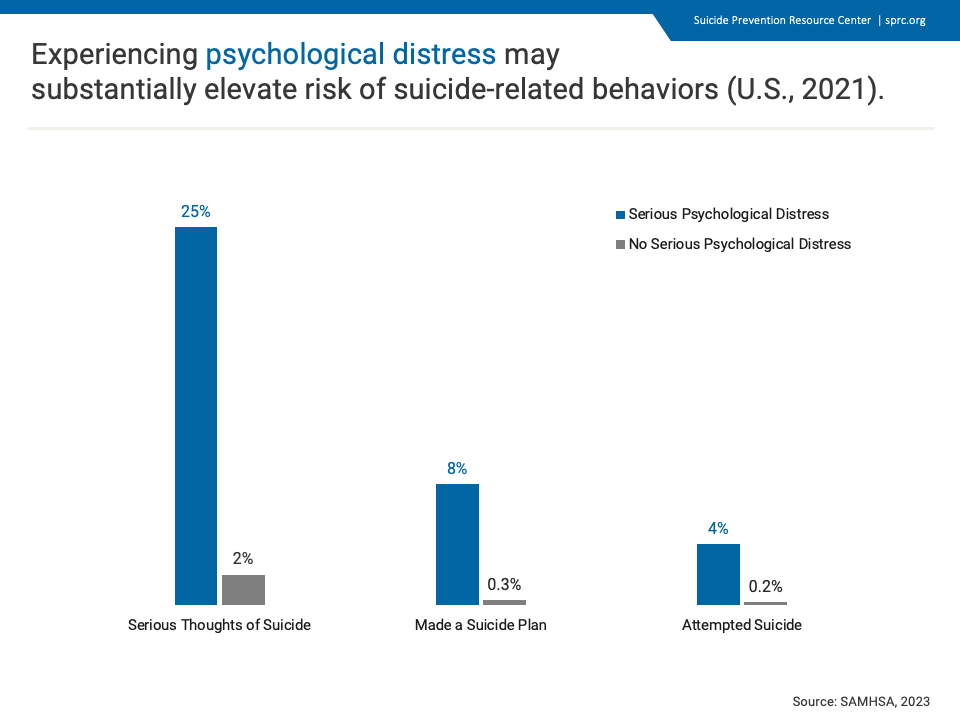
In 2021, individuals reporting past-year serious psychological distress were more likely to experience serious thoughts of suicide (25% versus 2%); make a suicide plan (8% versus .3%); and make a suicide attempt (4% versus .2%).2
References
- Centers for Disease Control and Prevention. (2023). Web-based injury statistics query and reporting system (WISQARS). National Center for Injury Prevention and Control. https://wisqars.cdc.gov/nvdrs/
- Center for Behavioral Health Statistics and Quality. (2023). 2021 National survey on drug use and health: Detailed tables. Substance Abuse and Mental Health Services Administration. https://www.samhsa.gov/data/report/2021-nsduh-detailed-tables
 | The charts and graphs in this section are also available as a PowerPoint slide set. Feel free to use this slide set to deliver a presentation about the scope of the suicide problem. |
